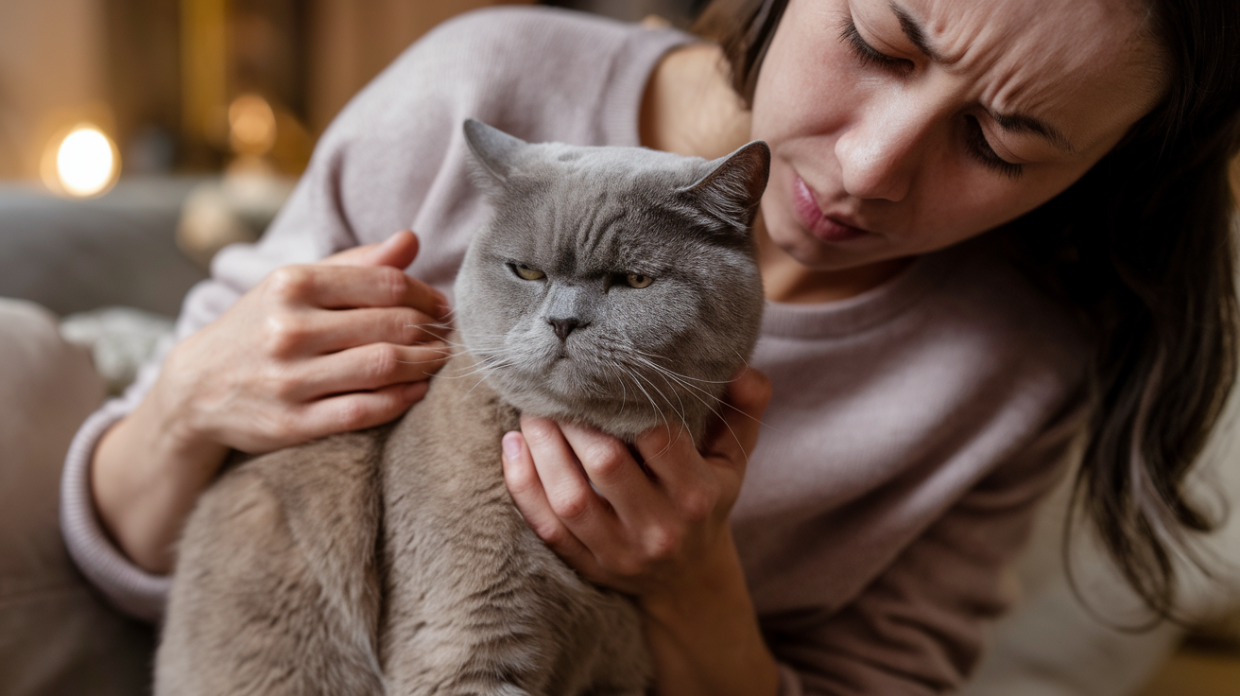As a cat owner, you might worry when your furry friend seems under the weather.
Fever is a common health concern that can signal your cat’s body is fighting an underlying issue.
Understanding what fever means, how to recognize it, and when to seek help can make a significant difference in your cat’s health and recovery.
This guide will walk you through everything you need to know about fever in cats, helping you become a more informed and confident pet parent.
Symptoms of Fever in Cats
Cats are experts at hiding illness, making it difficult to detect a fever early on.
Some signs to look out for include lethargy or unusual tiredness. If your cat seems less energetic than usual or sleeps more, it could indicate that something is wrong.
Another symptom is reduced appetite or a complete lack of interest in food. A cat that suddenly refuses food may be feeling unwell.
Warm or hot ears and nose can also indicate a fever, although this isn’t always a conclusive sign. Shivering or trembling is a common reaction to fever as the body tries to regulate its temperature.
Cats with a fever often stop grooming, leading to a roughened coat. Dehydration may also occur, which can show up as dry gums or less elastic skin.
Additionally, cats may hide more than usual, seeking out quiet places where they feel safe. Finally, a decrease in activity level is a common symptom as the fever drains your cat’s energy.
When to Be Concerned
While minor changes in behavior might not require immediate attention, certain signs should raise concern. If your cat’s fever lasts more than 24 hours, it’s important to consult a veterinarian.
A temperature above 104°F should not be ignored, as this can indicate a serious health issue.
Significant changes in behavior, such as excessive lethargy or vocalization, may also signal an urgent need for care. If your cat is also vomiting, having difficulty breathing, or showing visible signs of pain, it’s important to seek professional help right away.
Causes of Fever in Cats
Infections (Bacterial, Viral, Fungal)
Fever is often the body’s response to infections. Respiratory infections, urinary tract infections, and abscesses from bite wounds can all raise your cat’s temperature.
Viral diseases like feline leukemia or fungal infections can also lead to a fever as the immune system fights off the pathogen.
Inflammation
Certain health conditions cause inflammation in the body, which can trigger a fever. Conditions like arthritis or pancreatitis often result in elevated body temperature as part of the body’s inflammatory response.
Inflammatory bowel disease and autoimmune disorders are also common causes of fever in cats.
External Factors
External factors can sometimes cause cats to have fever. Exposure to toxins can cause the body to react and raise its temperature.
Some medications, including vaccines, can result in a mild fever as a side effect.
Severe stress and heat stroke are also causes of fever in cats, particularly in warmer environments.
Checking for Fever in Cats Without a Thermometer
If a thermometer isn’t available, look for these signs:
- Feel your cat’s ears and paws; see if they’re unusually warm
- Check for lethargy
- Observe changes in eating and drinking habits
- Look for overall behavioral changes
Using a Thermometer to Check for Fever at Home
While challenging, you can measure your cat’s temperature:
- Use a digital thermometer designed for pets
- Lubricate the tip with petroleum jelly
- Gently insert the thermometer about 1 inch into the rectum
- Hold your cat still and wait for the reading
- The normal temperature range is 100.5–102.5°F
Treatment Options

Professional Veterinary Care
When it comes to treating a fever, veterinary care is often necessary. A veterinarian will conduct a thorough examination and may perform diagnostic tests to identify the underlying cause of the fever.
Based on the findings, they will recommend appropriate medications or treatments specific to the issue.
Home Care Tips
Do’s:
- Ensure constant access to fresh water
- Create a quiet, comfortable resting area
- Use a cool, damp cloth to pat your cat gently
- Monitor temperature and symptoms
- Maintain a calm environment
Don’ts:
- Never give human medications
- Avoid over-the-counter fever reducers
- Don’t force-feed
- Don’t assume the fever will pass without monitoring
Recovery and Aftercare
To aid in your cat’s recovery, ensure they get plenty of rest. Offer water or wet food to keep them hydrated, which can help replenish fluids.
The environment should remain calm and quiet, as this allows your cat to recover without distractions. Carefully follow any instructions provided by the veterinarian regarding medication or care routines.
Post-Treatment Care
After receiving treatment from a veterinarian, it’s crucial to continue the prescribed medications as directed.
Monitor your cat’s temperature regularly to ensure that the fever is subsiding. Look for any signs that the fever may return or that other symptoms are appearing.
Maintaining a consistent feeding and care routine is important for your cat’s recovery. If recommended, be sure to attend any follow-up appointments to ensure that your cat is healing properly.
Conclusion
Understanding cat fever requires close attention, observation, and proactive care. While some fevers may resolve on their own, others may require professional intervention to ensure your cat’s health.
Trusting your instincts is crucial as a pet owner; if something seems wrong, it is always better to consult a veterinarian.
By recognizing the signs early, you can help your cat receive the proper treatment in time. Timely care and accurate diagnosis make a huge difference in your cat’s recovery.
Keep a watchful eye on your pet’s behavior and temperature, and take action if necessary to support their healing process and overall well-being.
For more helpful tips on caring for your furry friend, be sure to check out our other blogs on pet health and well-being!
Frequently Asked Questions
Can stress cause a fever in cats?
Yes, stress can temporarily raise a cat’s temperature, triggered by changes in the environment or unfamiliar situations.
Is a slight fever in cats ever normal?
Mild fevers may occur after vaccinations or minor infections, often resolving without treatment.
What should I do if my cat’s fever doesn’t improve after veterinary treatment?
Consult your vet for further investigation and potential additional treatments if the fever persists.






